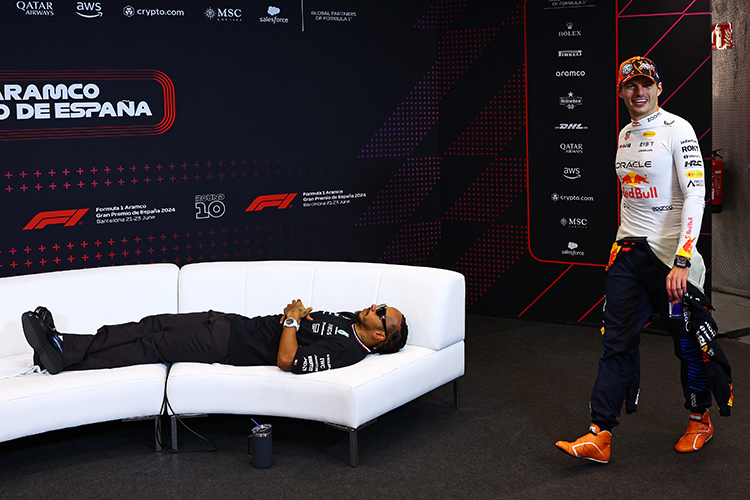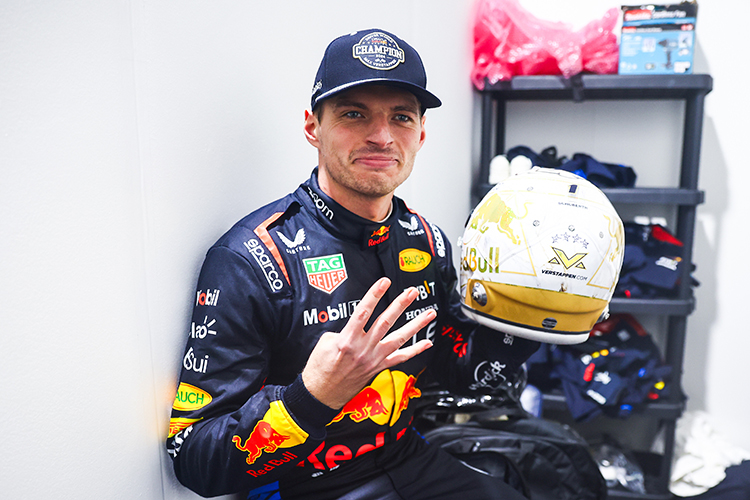Japanese GP: addressing Formula 1's overtaking dilemma
 Red Bull Racing/Red Bull Content Pool
Red Bull Racing/Red Bull Content Pool
SUZUKA, Japan — The aftermath of Sunday's Japanese Grand Prix saw a resurgent debate: Does Formula 1 have an overtaking problem?
Max Verstappen's impressive race-winning performance couldn't disguise the notable lack of passing throughout the grid. The race featured only 15 overtakes after the first lap—significantly lower than the 48 in 2024 and 29 in 2023 at the same venue. Notably, 11 of the 20 drivers finished in the same positions in which they started.
This sentiment of stagnation was palpable not just among viewers, but also among the drivers on track. Nico Hulkenberg succinctly described his experience after finishing 16th for Sauber, stating, "Long, dull, not much happening. I spent a lot of the race in traffic and it's not much fun looking at someone's rear wing in the DRS. It's so difficult with these cars in the dirty air."
Williams' Carlos Sainz, managing to execute two passes towards the race's end but still finishing exactly where he began in 15th, compared the overtaking difficulty to Monaco. "The midfield is so tight and around a track where you need to be 0.7 to 0.8 seconds quicker to pass it was impossible to expect a race where you could come back through the field," he said. "This is a track that has, in a way, become similar to Monaco in how difficult it is to pass."
Rookie Gabriel Bortoleto also expressed his frustration, noting, "It was not so difficult just a bit boring to stay behind [the car in front]. Even if you have more pace, which was my case towards the end of the race, it was not enough to have that really big pace advantage."
The core of the issue at the Japanese GP: limited overtaking opportunities
This isn't a new concern for Formula 1. Since 2009, the sport has tweaked regulations to promote overtaking and reduce the impact of "dirty air." Although the 2022 rule adjustments emphasizing underfloor aerodynamics initially improved passing opportunities, the evolutionary development of the cars has reinstated aerodynamics as a significant hindrance.
Alpine's Pierre Gasly highlighted this problem post-race. "It just seemed very tricky to get close," Gasly commented. "As soon as you get within 0.6 or 0.7 seconds it's really tough to close down that last gap -- it's extremely difficult."
McLaren team principal Andrea Stella elaborated on the issues with the current aerodynamic setup, stating, "Ultimately, we keep adding aerodynamic downforce [to the cars], which means that the losses are even bigger [behind a rival], so I think the dirty air is a problem."
Moreover, track resurfacing before the 2025 event led to smoother asphalt and minimal tyre degradation, a significant factor in the lack of overtaking. The McLaren team, typically benefitting from better tyre management, found no advantage over Red Bull at Suzuka. Lando Norris stated, "It was flat-out from start to finish but the pace was too similar to do anything."
Prospects and solutions for more exciting races in Formula 1
While the 2022 regulations achieved their goal of narrowing the performance gaps between teams, as evidenced by the tight margins in Suzuka’s qualifying session, it has inadvertently placed a stronger emphasis on qualifying and less on race-day maneuvers.
Ferrari team principal Fred Vasseur noted, "The smaller the gap is between cars, the more true that is ... because you are in the group of cars. Yes, it will probably be a 'quali' championship."
The upcoming Bahrain Grand Prix, known for its abrasive track surface and multiple overtaking opportunities, will provide a crucial test of the extent of Formula 1's overtaking issue.
Veteran driver Fernando Alonso provided a balanced perspective, acknowledging the unique challenges of each circuit. "This is Suzuka, I don't remember a race even in the past that we see too many overtakings here without the weather changing," he said. "This is Formula 1. Suzuka is great, first because Saturday is incredibly high adrenaline, so it's good that it is."
While some races will inevitably favor qualifying performances over race-day battles, the sport’s governing bodies continue to seek ways to maintain the excitement of wheel-to-wheel action, ensuring Formula 1 remains as thrilling and unpredictable as ever.
Up Next



